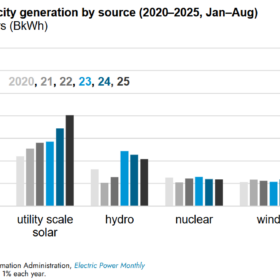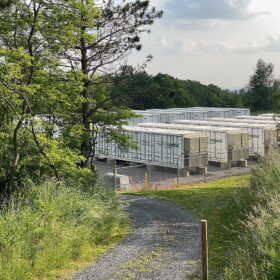In 2007, KEA set a goal to produce 95 percent of Kodiak’s energy from renewable sources by 2020, to reduce reliance on diesel fuel and lower the cost of generation to customers. Today, the island has achieved that goal through a combination of hydroelectric and wind energy, KEA officials say. The new batteries will permit greater harvesting of wind potential.
This switch to lithium ion is reflective of the global battery market, in which lithium ion now represents 37 percent of all use, compared with lead acid representing 32 percent of the market. Market analysts CRU reckon that lithium ion demand will grow up to 20 percent per year over the next five years, while lead acid will grow at a single digit rate.
Lithium ion technology is used for the vast majority of stationary rechargeable applications like renewable energy storage. Lithium ion batteries will provide roughly three times — or about 150 kWh/kg— the run time of lead acid batteries, and will provide about four times the specific power — about 400 W/kg — as lead acid. As a result, lithium ion is expected to supply 80 percent of the new battery demand globally over the next five years, CRU reports.
Darron Scott, the CEO of Kodiak Electric Association (KEA), commented, “Our main goal has always been to bring more renewables to the island and greatly reduce the cost and environmental impacts of using diesel fuel. We realized early on that battery storage is the best solution to help us achieve these goals, and that Younicos is a company with the right technology and expertise – as well as a passion for clean and affordable energy.”
This content is protected by copyright and may not be reused. If you want to cooperate with us and would like to reuse some of our content, please contact: editors@pv-magazine.com.









Could be nice to correct the inaccuracies in the article:
“Lithium ion batteries will provide roughly three times — or about 150 kWh/kg— the run time of lead acid batteries, and will provide about four times the specific power — about 400 W/kg — as lead acid.”
– 150 Wh/kg is already great for Li-ion batteries
– the run time of Li-ion and lead acid batteries is mainly depending on the use of the battery (deep cycling/full charge/temperature etc…). It was estimated to 1000 cycles (80 % DoD at C/3) and 3-5 years of use for the previous lead acid storage system (IRENA, 2015b. BATTERY STORAGE FOR RENEWABLES: MARKET STATUS AND
TECHNOLOGY OUTLOOK case studies : battery storage, Available at:
http://www.irena.org/DocumentDownloads/Publications/IRENA_Battery_Storage_case_stu
dies_2015.pdf).
– A storage cost estimation cost (LCOS/LCOE) would be appreciated. (estimated to 4 M$/MWh on the previous storage system.
Best regards
Nicolas